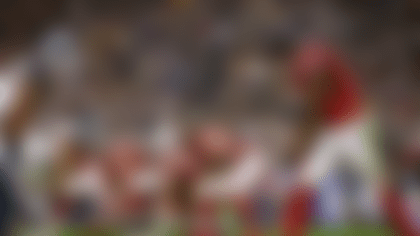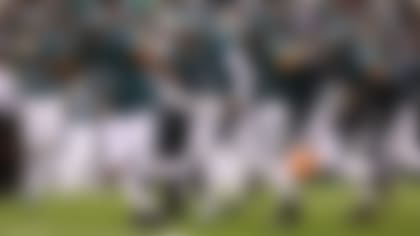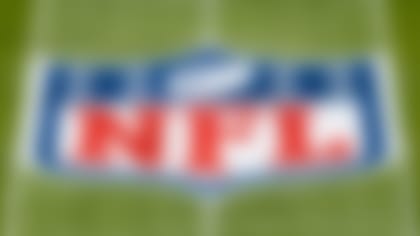As head coach of the Atlanta Falcons, Dan Quinn has built his program on a culture of brotherhood.
"The best part of the game is the connection with the players," Coach Quinn said.
"Although it's physical and tough, the main thing's that we take care of one another," he said.
Coach Quinn has seen firsthand how heightened awareness of player health and safety has had a positive impact on football.
"Health and safety is a part of everything we do – including the weight room, including on the field, from practice to training, to recovery to treatments," Coach Quinn said.
An Emphasis on Teaching
"Teaching is my favorite part of this job," Coach Quinn said. "The work you put in is for game days."
"It starts with our athletic performance team – that includes strength and conditioning and athletic training," Coach Quinn said.
"The second piece is the athletic performance on the coaching side to make sure that, from a health standpoint, the player's in the best spot," he said.

For example, Coach Quinn teaches his players shoulder tackling—which maintains the physicality of the game, but also focuses on safety by removing the head from the technique.
"When you get to the games, it should be exactly the same techniques we're teaching at the facilities around the league – and that is the highest example of trusting your training," he said.
Rules Changes to Advance Safety
The NFL regularly evaluates rules in an effort to promote player health and safety.
"Changing and tweaking some rules for the better of the game, you can't minimize how important that is," Coach Quinn said.
For example, clubs expanded protection to defenseless players before the 2019 season, making it a foul if a player initiates a block when his path is toward or parallel to his own end line and makes forcible contact to his opponent with his helmet, forearm, or shoulder.
"Every rule change is with the players' interests in mind," Coach Quinn said.
"So if there's a way to do it better and a way to do it safer so their career is better and the game is better, I think all of us would agree that's a good thing," he said.
"Tailor-Made" Programs for Players
Meeting players where they are in their career and providing individualized care is a major component of Coach Quinn's approach to safety.
"Our job as coaches it to take every player as far as we can – that's from the draft picks to a player who's been here for a long time," Coach Quinn said.

"Some of the programs have to be tailor-made to specific players," he said.
Personalized player care includes everything from basic information on nutrition to strength and conditioning training to comprehensive injury-recovery programs.
"We make sure each player is getting the proper amount of work relative to where they're at from a health standpoint," Coach Quinn says.
Synchronized Care
A specialized squad works to ensure players receive consistent, comprehensive care.
"Medical staff, strength and conditioning, athletic performance – the collaboration that has to take place between different departments is crucial to ensure that each player is prepared the very best way," Coach Quinn said.
That collaborative effort extends to game day.
"On game day, there's an army of people there to assist the players," Coach Quinn said.
A team of 30 team physicians, unaffiliated medical staff, and physicians from the local areas watch the field for potential injuries and is available to provide immediate care to players at every NFL game.
That includes two certified athletic trainers (booth ATC spotters)–the “eyes in the sky”—who monitor the game from a stadium box high above the field and three Unaffiliated Neurological Consultants (UNCs) who carefully observe the game to help identify players with potential injuries or symptoms of concussions.
Sharing Information
The abundance of information available to coaches and players is a vital component of advancing player health and safety.
"For instance," Coach Quinn said, "the NFL providing players access to what helmets are safest and most effective."
Every year, the NFL and the NFL Players Association (NFLPA) perform a laboratory study of helmets in an attempt to evaluate which ones best reduce head impact severity in conditions that are intended to represent potentially concussive head impacts in the NFL.

The results have been displayed each year on a poster and shared with NFL players, club equipment managers, and club medical, training and coaching staffs to help players make more informed equipment decisions.
This year, based on the results of this 2018 study and the opinions of the biomechanical experts involved, the NFL and NFLPA will prohibit 10 helmet models from being worn by NFL players.
The NFL also works with Dr. Richard Kent, a professor of Mechanical and Aerospace Engineering, Biomedical Engineering and Emergency Medicine at the University of Virginia, to develop laboratory tests that evaluate cleat performance and safety.
As with the helmet testing results, the cleat performance results are summarized on a poster and shared with NFL clubs as an additional health and safety resource.
Players also have access to innovative new technology to help them choose properly fitting cleats. The HP FitStation technology is now installed in all 32 NFL locker rooms to scan a player's feet and identify the shoe models and sizes that best match them.
"Education is a real big part of what we do," Coach Quinn says.
"We have the research, we now have the information, let's make sure we're sharing it with everybody," he said.
Moving the Game Forward
Two decades into his coaching career, Coach Quinn says the increased emphasis on health and safety is "making the game better."
"We're trying to move the game forward," Coach Quinn said.
"It's the greatest game. If there's a way to do it better and safer – not just for the next generation, but for the next season – all of us take the responsibility seriously."












